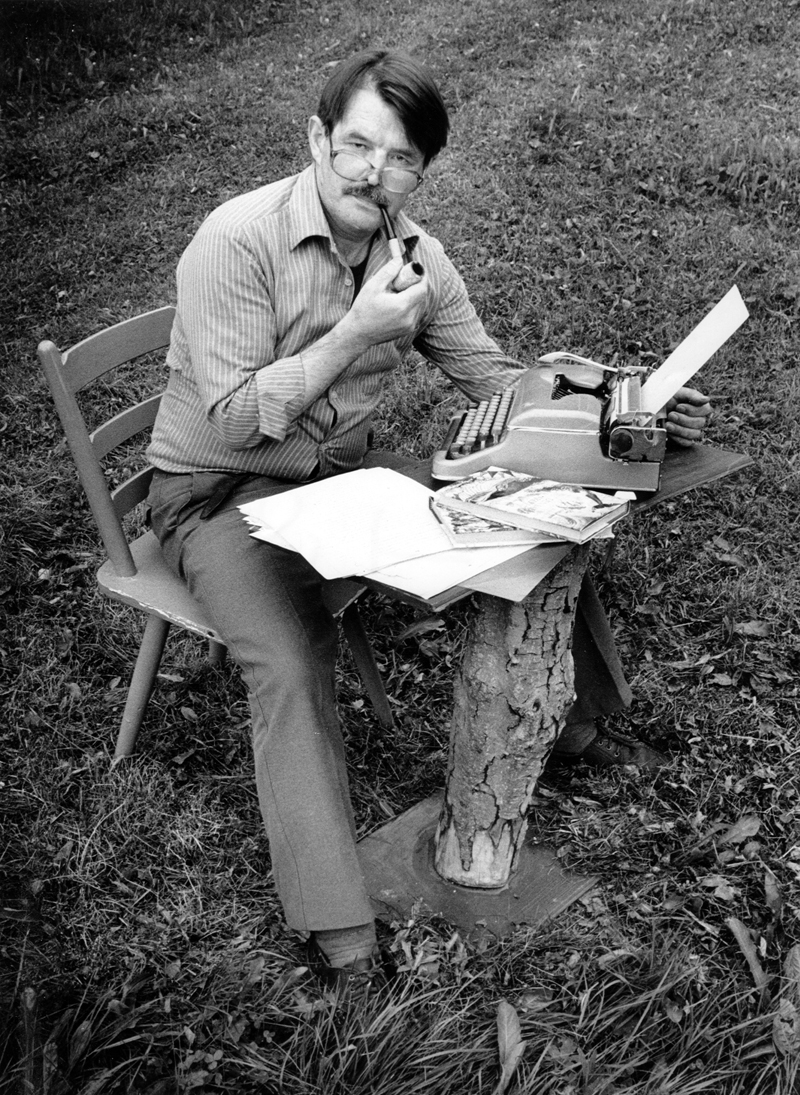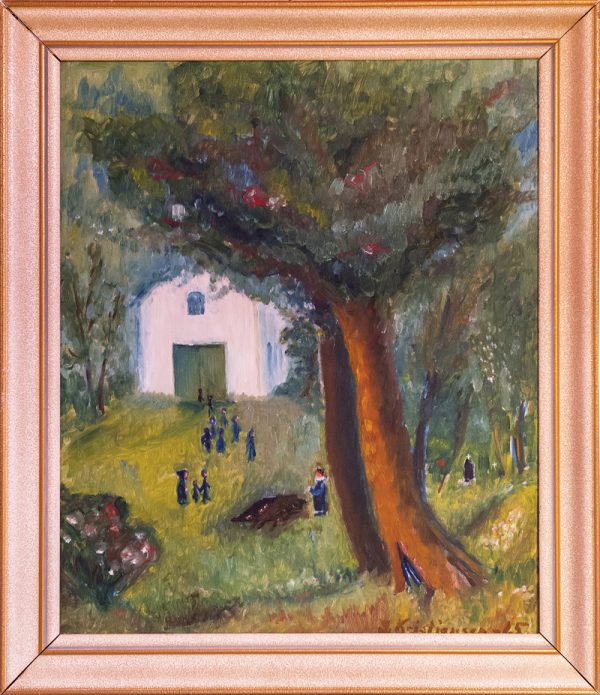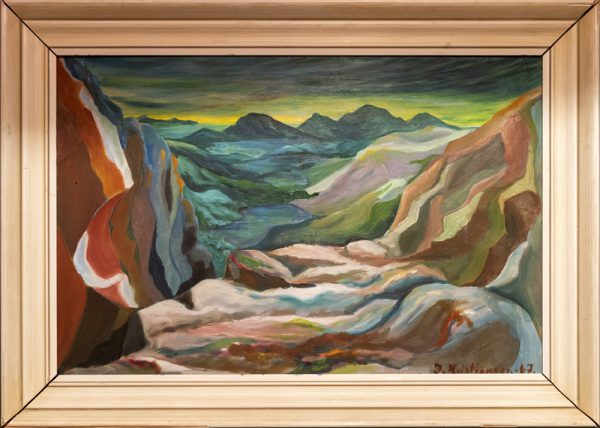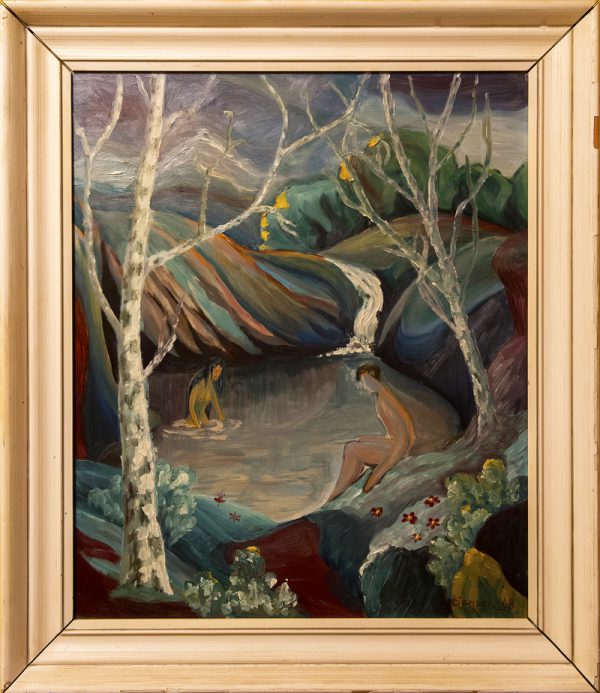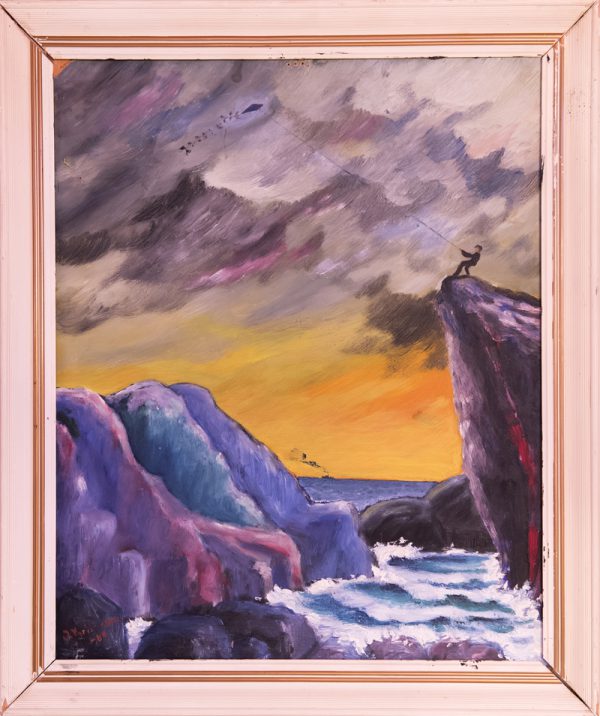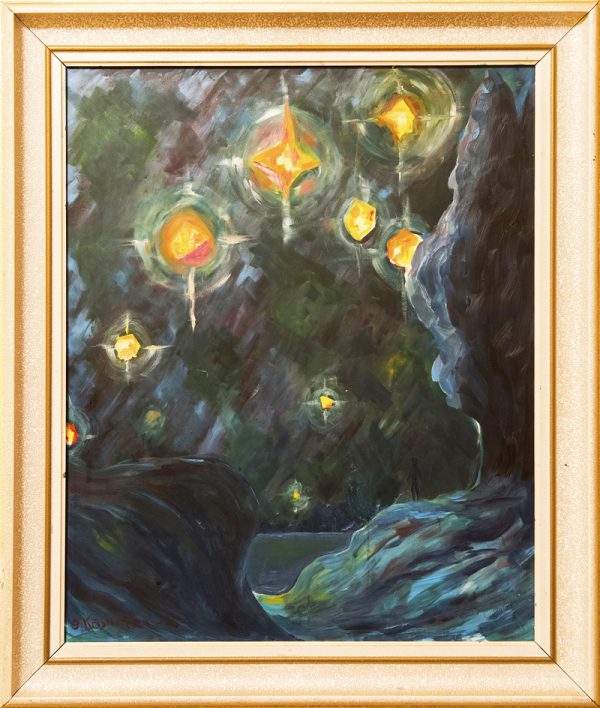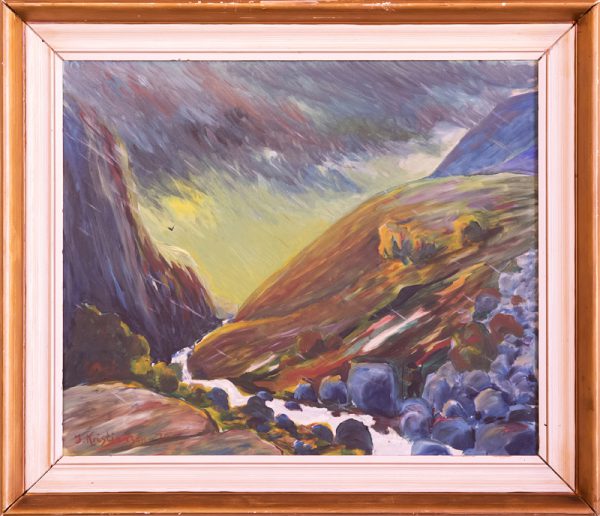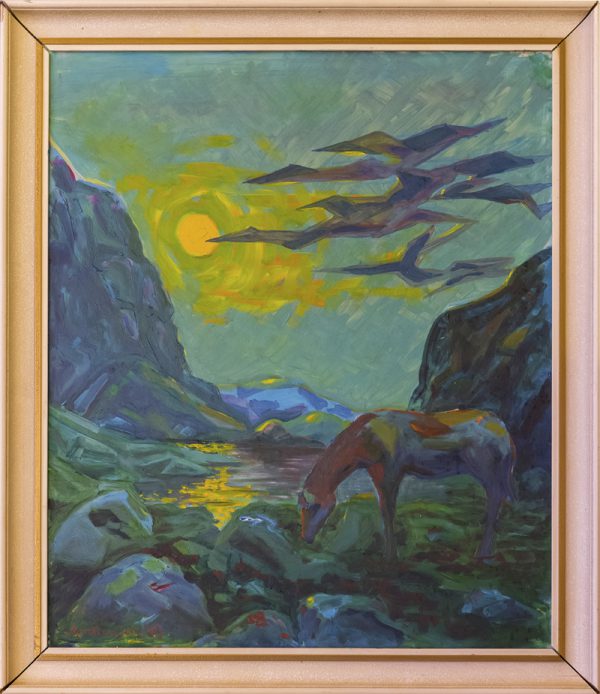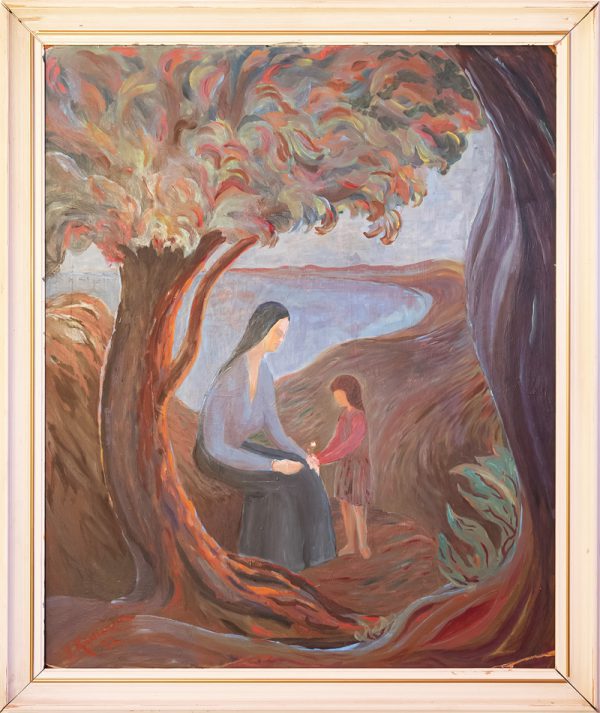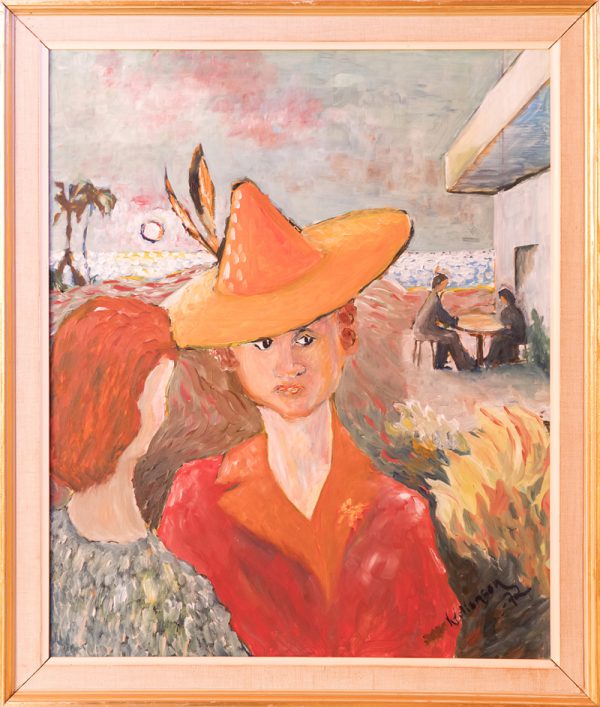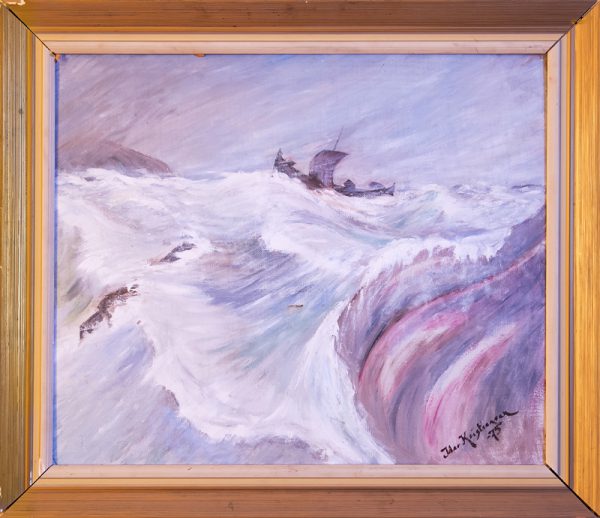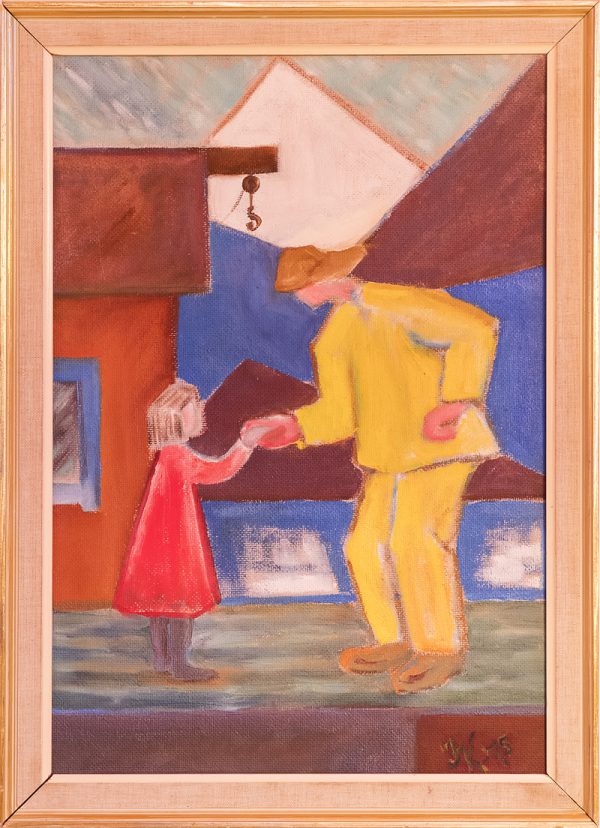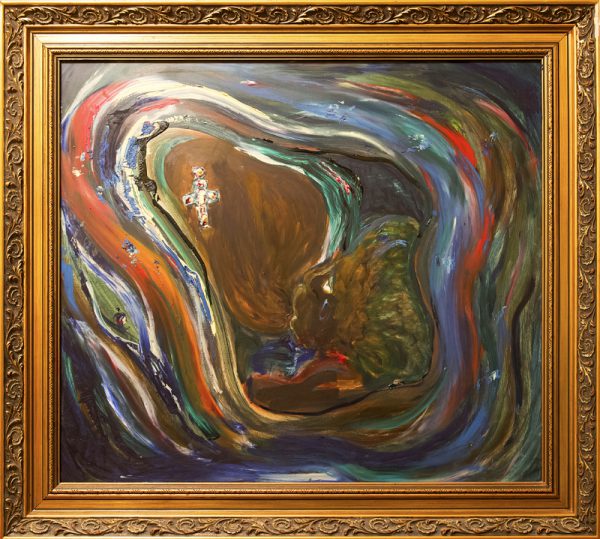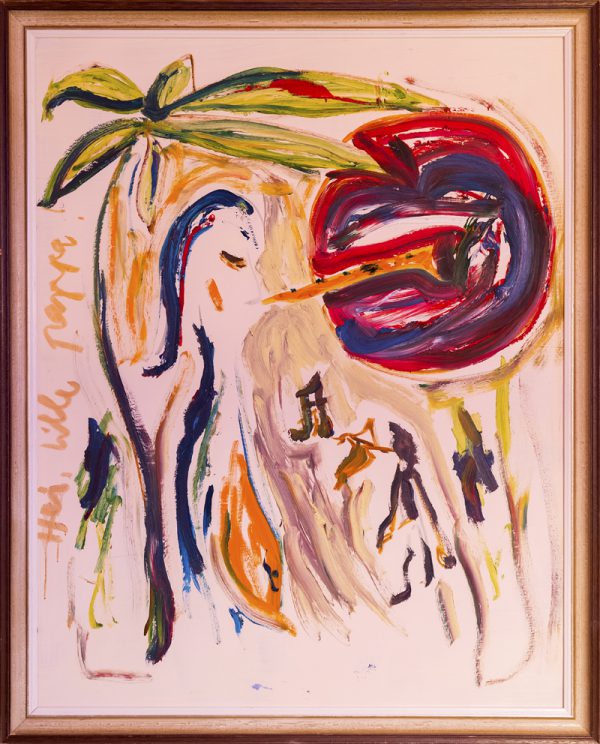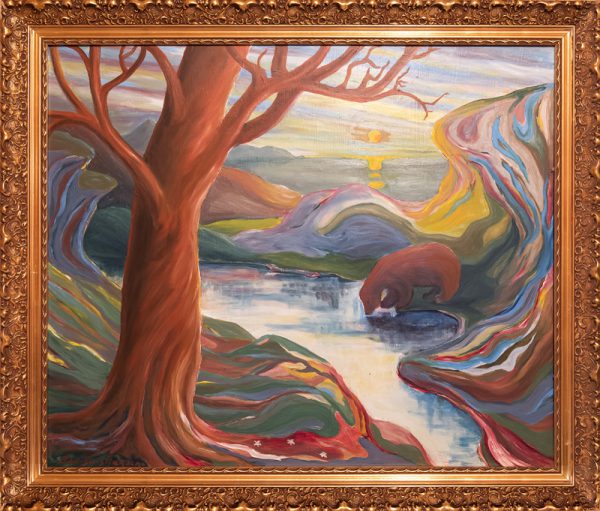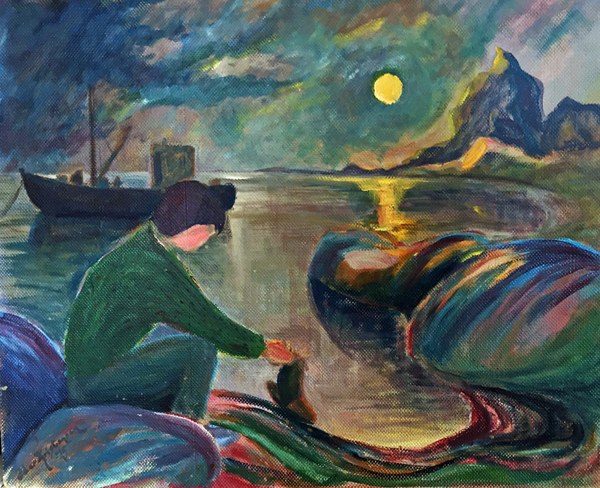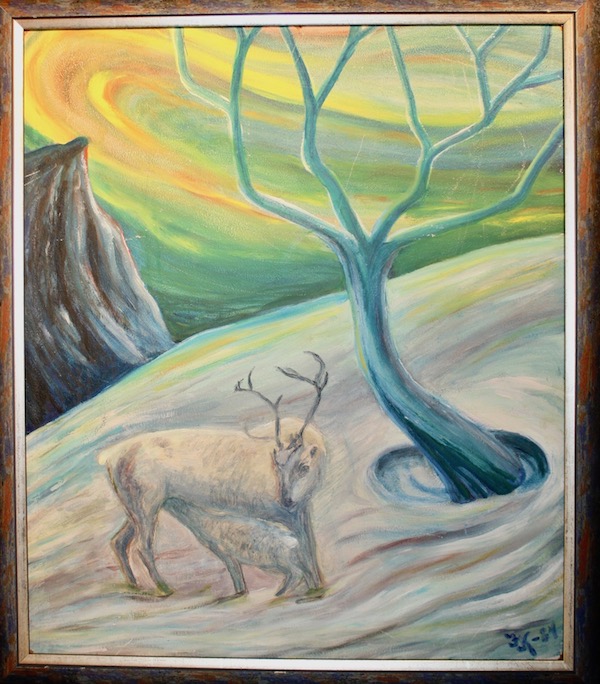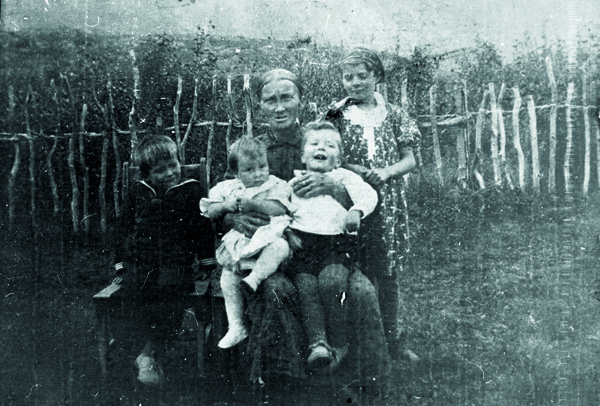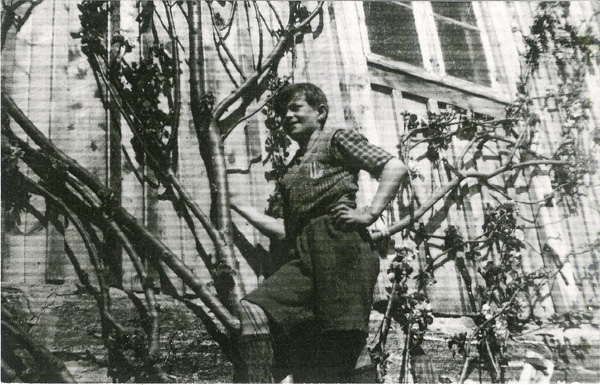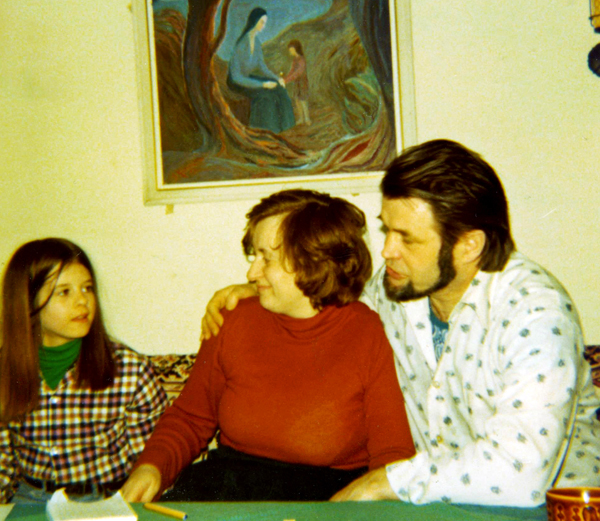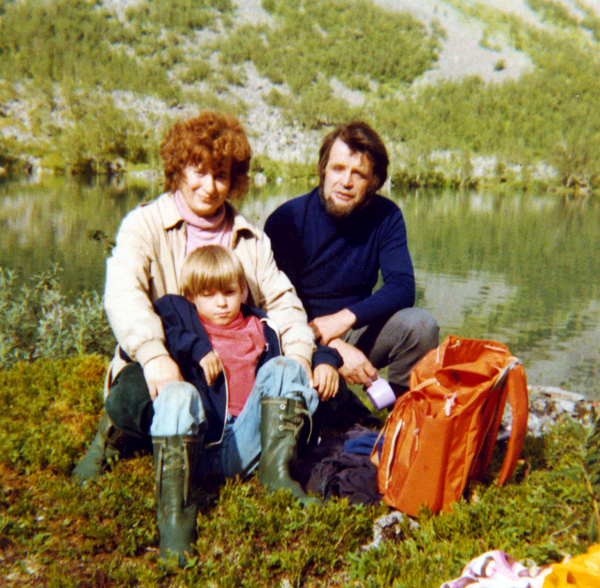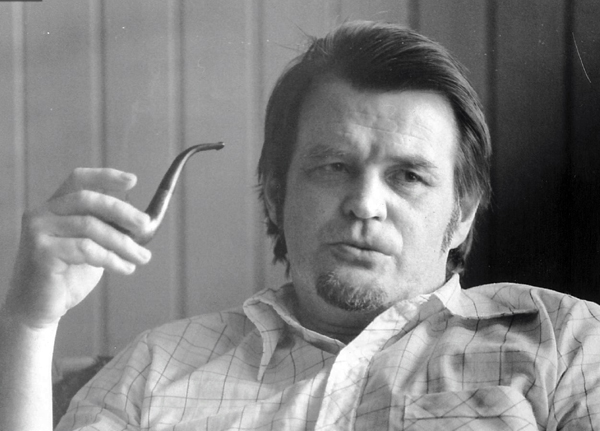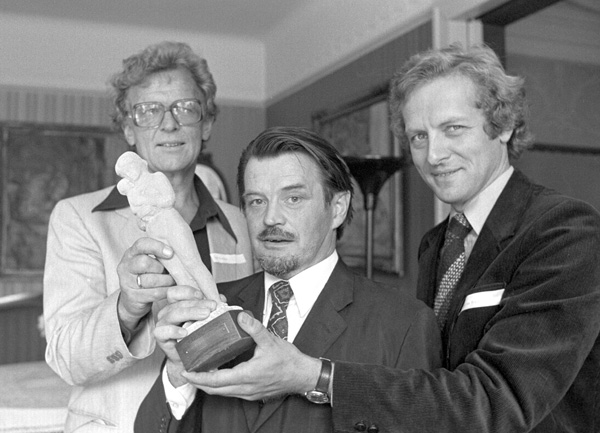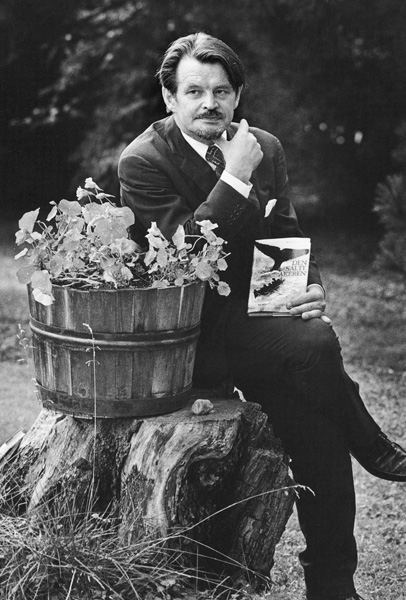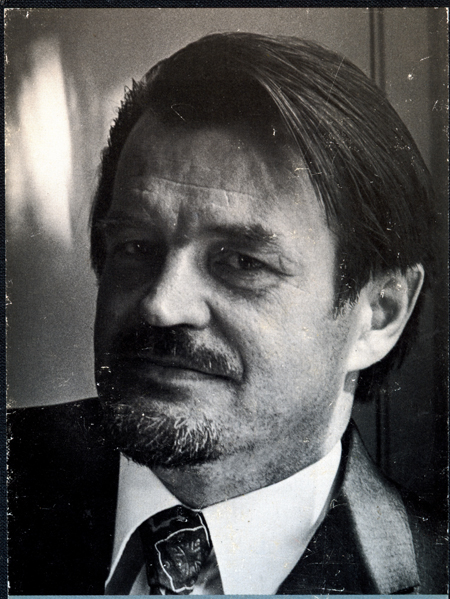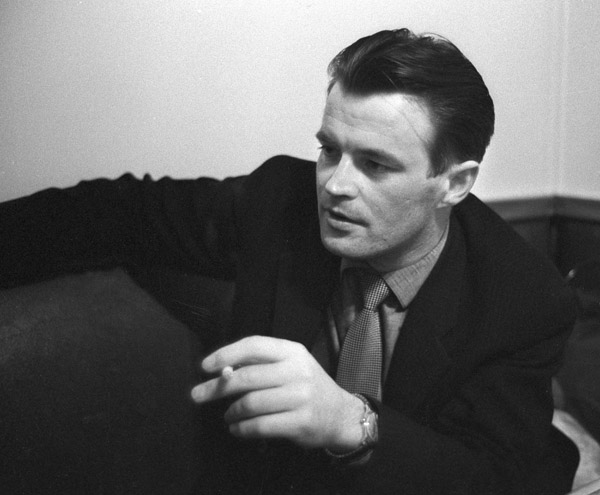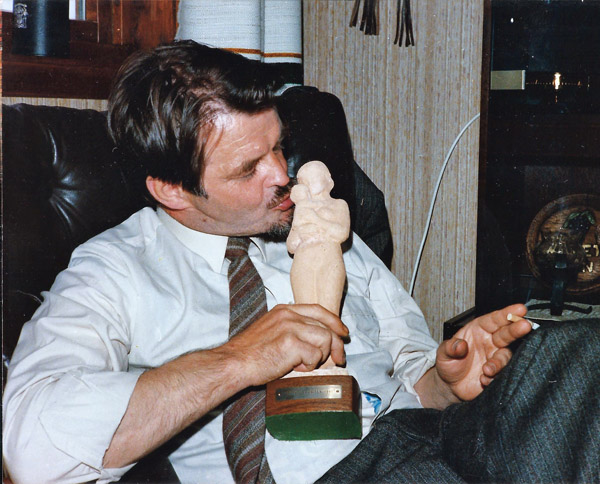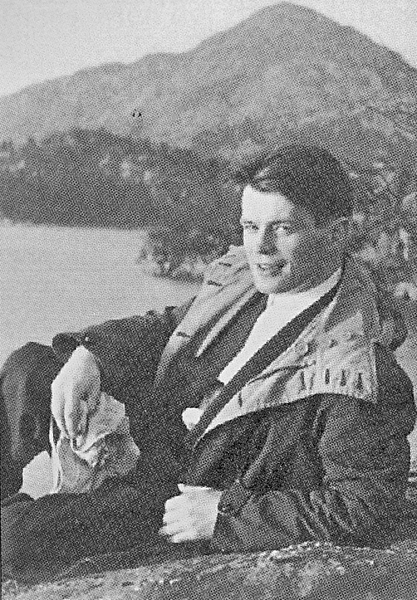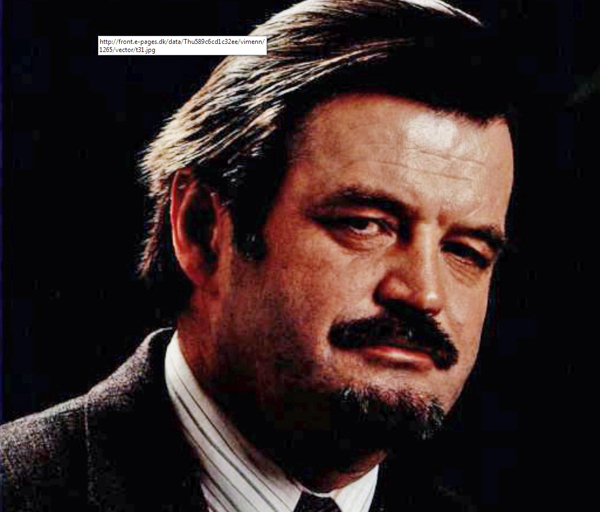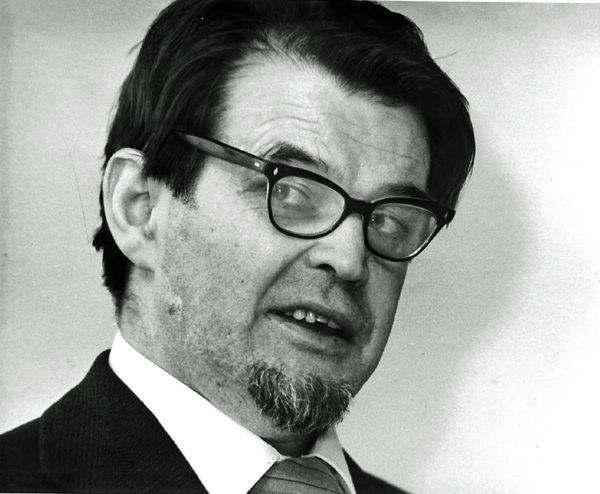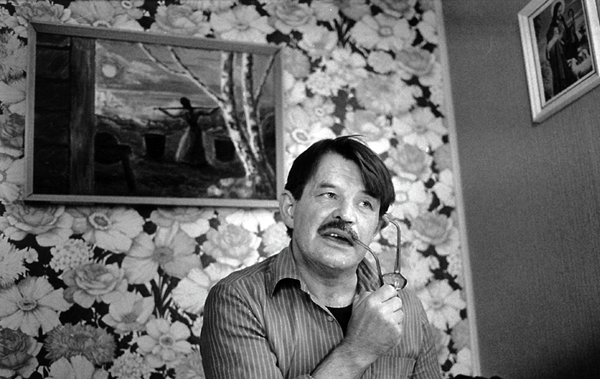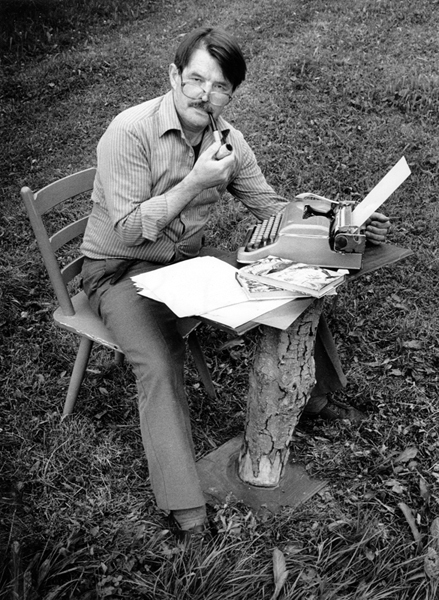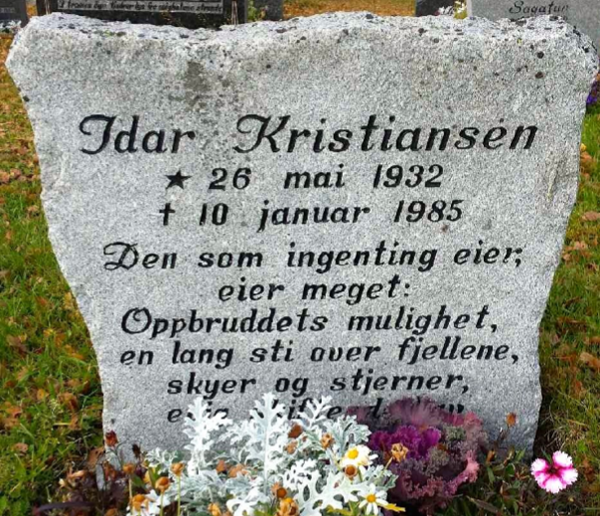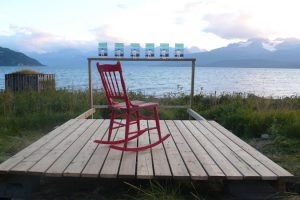Idar Kristiansen
The Kven and the Sami culture, and the love of his home territory, characterize the authorship of Idar Kristiansen from Kåfjord.
Idar Kristiansen was born in 1932 in Honningsvåg. His parents were from Northern Troms. In 1942, his family fled from the warships along the Finnmark coast to his father’s hometown Manndalen. They lived here for two years before they had to evacuate again to Nordmøre in the fall of 1944. His father died Christmas 1945 in Nordmøre. In 1946, the family moved to Olderdalen. That same year he started his high school education. He later received a scholarship for education at Tromsø Teacher Training College (1949-1953). He participated actively in the literature environment at the school. From 1953 to 1969 he worked as a teacher in many places in Norway, from “Vålerenga to Nordkapp”. Kristiansen worked as a freelance journalist in several newspapers and journals and he made a series of radio causeries for NRK (1968-77). He also painted paintings. These were generously given away to family and friends as gifts.
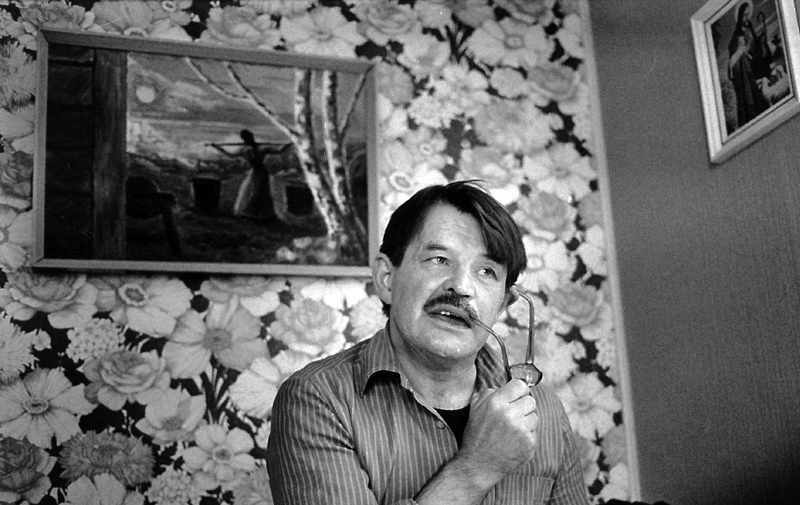
Idar Kristiansen, Olderdalen 1984. Foto: Torgrim Rath Olsen.
His debut book “Sanger fra en tundra” (1957) was well received by the reviewers in the Norwegian press. The poetry sets the tone for the future authorship with focus on nature, people and culture on the Northern Calotte. In 1970 “Korstog mot Kautokeino”, a documentary novel of the Sami rebellion against authority and social injustice,culminating in a bloody religious riot in Kautokeino in the fall of 1852. The main work of Kristiansen’s authorship is the four novels in the series “Kornet og fiskene” which tells the story of Finnish emigration to Finnmark and Northern Troms in the last half of the 1800s due to famine years in Finland. The series caused both great enthusiasm and intense debate in its contemporary age. For the first two books in the series – “Svanevinger I nord” (1978) and “Den salte åkeren” (1979) he won the Aschehoug Prize in 1980, and was nominated for the Nordic Council’s Literature Prize 1981 for “Stiene fører til havet” (1980).
He died in January 1985 before the movie Havlandet (1985) was completed. The film is based on the first two books of “Kornet og fiskene” and is directed by Lasse Glomm. The novel “Nådekvalpenes dal” was released posthumously in 1985. The town depicted here is Manndalen. In this book Kristiansen’s own childhood memories from The Second World War is the inspiration. It was the first novel of a series of three where he thought to portray the evacuation, life as a refugee and the resurrection in Northern Troms and Finnmark.
See Idar Kristiansens paintings:
Lydfiler, Kåserier
Tjærebrenning, 1977
Tirsdag den 22., 1968
Tilbakeblikk på fremskritt, 1969
Spøkelser, 1968
Svartår, 1969
Om kortspill, 1968
Sladder, 1968
Gode naboer, 1968
Grenselandet, 1977
Dåren som elsket Nord-Norge, 1977
Manndalen i Nord-Troms, Steder i Norge, 1975
Danskene, 1969
Idar Kristiansen leser utvalgte dikt fra Sanger fra en tundra og Alt du trodde glemt
Du kom til meg i drømme, lest av Jørn Ording, 1980
Her bor mitt folk, lest av Stein Bjørn
Idar Kristiansen på Kveldsnytt
Her bor mitt folk – film av Ørjan Bertelsen
Nordlyseventyr
Bildegalleri
About Idar Kristiansen
- Author, journalist, painter
- Born in Honningsvåg 1932
- Mother from Lyngen and father from Kåfjord
- Lived in Olderdalen in Kåfjord most of his life
- Worked many years as teacher and journalist
- Won the Aschehougs Prize, 1980
- Nominated to the Nordic Council Literature Prize, 1981
- Died in 1985
Releases
- Sanger fra en tundra – diktsamling, 1957
- Alt du trodde glemt, diktsamlig 1961
- Korstog mot Kautokeino, 1970
- Svanevinger i nord – roman, 1978
- Den salte åkeren – roman, 1979
- Stiene fører til havet – roman, 1980
- Guds nåde nordpå – roman, 1981
- Brenninger forut – noveller og dikt, 1982
- Regnskap i rødt, krimroman, 1983
- Nådekvalpens dal, roman, 1985
Tobben & Ero – Hungerstanka fra Ollikangas (Idar Kristiansen).
Hungerstankan fra Ollikangas- Solengbrødrene
Nälkäajatuksii Ollikankhaasta – Solengbrødrene
Reidar Breivik talks about one of Idar Kristiansens paintings




